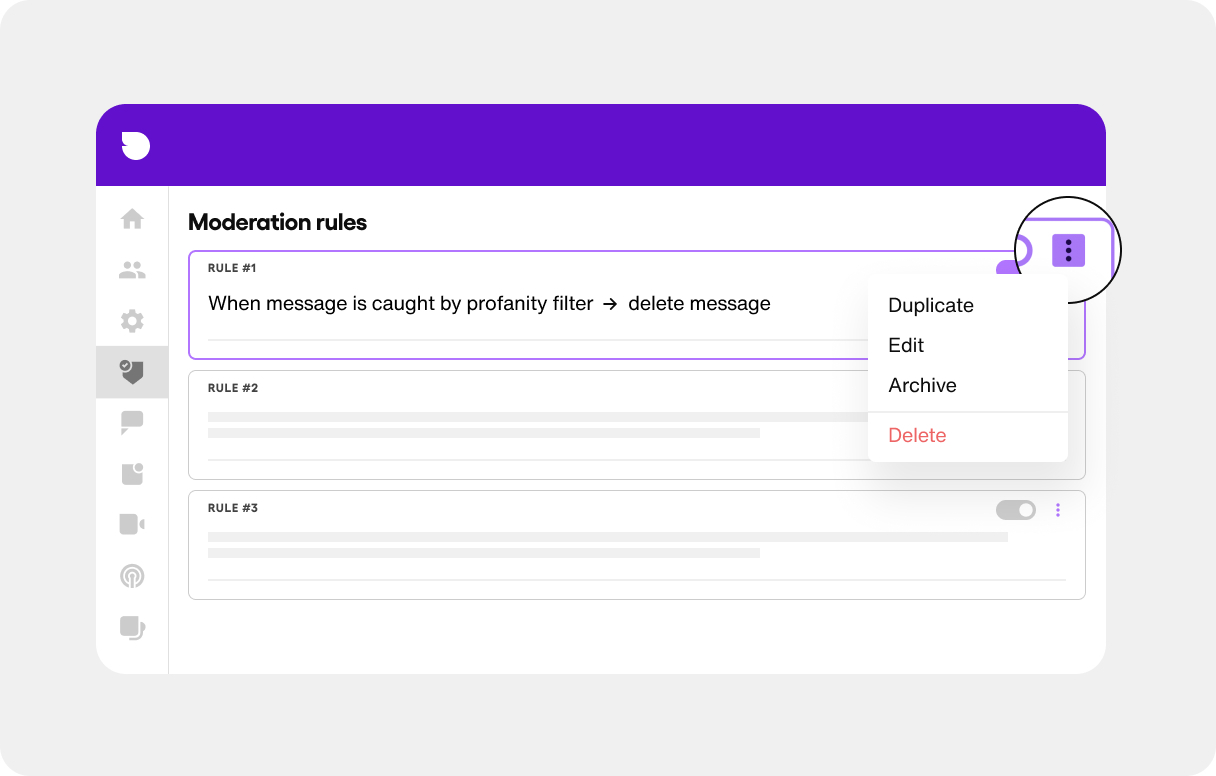Secrets to Effective Influencer Account Management Unveiled


Introduction
Definition of Influencer Account Management
Influencer Account Management refers to the strategic approach of overseeing and nurturing relationships with influencers. This involves coordinating campaigns, monitoring performance, and ensuring that both brands and influencers work seamlessly together. It’s about aligning the goals of the influencers with the objectives of the brands they represent.
Significance of Effective Influencer Account Management
Effective influencer account management is crucial in today’s marketing landscape. It not only maximizes the impact of campaigns but also builds sustainable partnerships. Here’s why it’s significant:
- Enhanced Brand Visibility: Strong influencer relationships lead to broader reach and increased awareness for the brand.
- Authenticity: Proper management fosters genuine connections, ensuring that content resonates with audiences.
- Improved ROI: Well-managed campaigns yield better results, translating into higher return on investment.
By prioritizing influencer account management, brands can navigate the complexities of influencer marketing with confidence, leading to more successful and memorable campaigns.

Understanding Influencer Partnerships
Identifying the Right Influencers
Choosing the right influencers for your brand can significantly enhance campaign effectiveness. It’s important to do thorough research before diving in. Consider factors like:
- Relevance: Does the influencer’s niche align with your brand?
- Engagement: What is the level of engagement on their posts?
- Audience Demographics: Who are their followers, and do they match your target market?
A personal example involves selecting an influencer from the fitness niche for a new sports drink. Their followers were primarily health enthusiasts, which perfectly matched our target audience.
Building Authentic Relationships with Influencers
Once the right influencers are identified, the next step is building authentic relationships. This creates a foundation of trust and collaboration. Here are some strategies to consider:
- Personalized Communication: Approach influencers with personalized messages that show genuine interest in their work.
- Collaborative Opportunities: Invite them to co-create content, providing both parties a chance to shine.
- Regular Check-Ins: Maintain communication even outside of campaigns to nurture the relationship.
Engaging with influencers beyond the transactional level can lead to more authentic and impactful collaborations, ultimately benefiting both the brand and influencer in the long run.

Setting Clear Objectives
Establishing Campaign Goals
Setting clear objectives is crucial for guiding influencer marketing efforts. This groundwork ensures all stakeholders understand what success looks like. Begin by establishing campaign goals, which should be:
- Specific: Goals should clearly define what you aim to achieve (e.g., increase brand awareness).
- Measurable: Make sure they can be quantified (e.g., reaching a set number of impressions).
- Achievable: Set realistic targets based on market research.
For instance, during a recent product launch, our goal was to achieve a 30% increase in website traffic within a month. This clarity helped streamline efforts.
Defining Key Performance Indicators (KPIs)
Once goals are established, defining Key Performance Indicators (KPIs) is essential to measure success accurately. These metrics can include:
- Engagement Rates: Likes, shares, comments on influencer posts.
- Conversion Rates: Amount of traffic driven to the brand’s website.
- Return on Investment (ROI): Evaluating the financial return from the campaign.
A practical example from a past campaign involved setting a KPI for a 20% increase in newsletter sign-ups. Monitoring these KPIs helped our team adjust tactics in real time, ensuring we stayed on track to meet our goals. With clear objectives in place, brands can effectively steer their influencer partnerships toward success.

Creating Compelling Campaign Briefs
Crafting Engaging Content Guidelines
With clear objectives set, the next essential step is creating compelling campaign briefs that outline your expectations. A solid brief should include engaging content guidelines that help influencers present your brand authentically. Consider:
- Tone and Voice: Specify the desired tone (e.g., friendly, professional).
- Key Messages: Highlight the main points you want conveyed.
- Visual Style: Suggest aesthetics, including colors, fonts, and imagery.
For one campaign, we provided influencers with a mood board that captured the essence of our brand. This approach allowed them to create content that truly resonated with our audience while remaining aligned with our vision.
Effective Communication with Influencers
Equally important is maintaining effective communication with influencers throughout the campaign. Here are some strategies to ensure smooth interactions:
- Accessibility: Be available for questions, offering prompt responses.
- Regular Updates: Keep influencers informed about any changes or important information.
- Feedback Loop: Encourage a continuous flow of feedback to refine the partnership.
A personal experience with an influencer who felt comfortable reaching out for advice led to a dynamic and successful collaboration. By fostering an open and collaborative environment, brands can ensure that influencers feel valued and empowered to produce their best work. Ultimately, well-crafted briefs coupled with strong communication pave the way for successful influencer campaigns.

Managing Influencer Relationships
Providing Feedback and Guidance
Successful influencer partnerships thrive on continuous management, which includes providing constructive feedback and guidance. This helps influencers align better with brand expectations and enhance their creativity. When offering feedback, make sure to:
- Be Specific: Highlight what worked well and what didn’t.
- Encourage Creativity: While giving guidance, invite influencers to add their unique spin.
- Use Positive Language: Frame constructive criticism in a way that fosters growth.
In a previous campaign, I worked with an influencer who initially misinterpreted our messaging. By providing specific guidance, not only did we correct the course, but the influencer also produced more engaging content, ultimately benefitting both parties.
Addressing Issues and Concerns Promptly
Timely communication is key when it comes to addressing any issues or concerns that arise. Here are strategies for effective issue management:
- Act Quickly: Don’t let concerns fester. Address them as soon as they’re identified.
- Listen Actively: Ensure influencers feel heard and appreciated, which fosters trust.
- Problem-Solving Approach: Work collaboratively to find solutions rather than placing blame.
For instance, during a past project, an influencer faced technical issues with video editing. By quickly offering assistance and resources, we maintained project momentum and strengthened our relationship, highlighting the importance of proactive communication. By managing influencer relationships effectively, brands can cultivate trust, leading to more impactful collaborations.

Monitoring and Evaluating Performance
Tracking Key Metrics and Analytics
Once the influencer campaigns are underway, the next step is monitoring and evaluating performance. Tracking key metrics and analytics is crucial for understanding a campaign’s effectiveness. Important metrics to track may include:
- Engagement Rate: Likes, comments, and shares indicate how audiences are interacting.
- Reach and Impressions: Measure how many people have seen the content.
- Traffic and Conversions: Analyze the number of website visits or sales generated from the campaign.
In a recent campaign, we used social media analytics tools to track engagement. Notably, a specific influencer’s post brought in a significantly higher traffic spike, helping us identify which content resonated most with the audience.
Assessing Campaign Success and ROI
After collecting metrics, the next stage is assessing campaign success and calculating return on investment (ROI). Here’s how to effectively evaluate results:
- Compare Goals to Outcomes: Analyze whether the campaign met the predetermined objectives.
- Cost-Effectiveness: Evaluate the cost of the campaign against the generated revenue or leads.
- Gather Feedback: Collect input from influencers and stakeholders to refine future strategies.
For instance, in one campaign, we aimed for a 25% increase in sales, and by calculating the total sales attributed to the influencer’s efforts, we found we surpassed our goal by 10%. This detailed evaluation not only highlighted the campaign’s effectiveness but also provided insights for future projects, promoting continuous improvement in influencer partnerships. Monitoring and evaluating performance ensures that brands continue to optimize their strategies for even greater success.

Optimizing Campaigns for Success
Iterating Based on Insights
With performance evaluations complete, it’s essential to optimize campaigns for success by iterating based on insights gained. This involves analyzing what worked well and what didn’t, which allows for strategic adjustments. Key steps include:
- A/B Testing: Experiment with different content variations to see what resonates best.
- Feedback Review: Look closely at feedback from influencers and audiences for actionable insights.
- Adjust Strategies: If certain approaches are underperforming, consider pivoting to new tactics.
In a past campaign, we discovered that video content outperformed static posts significantly. By iteratively refining our content strategy to focus more on video, we saw engagement rates soar in subsequent campaigns.
Leveraging Data for Future Campaigns
Once insights are gathered, leveraging data is critical for informing future campaigns. Here’s how to effectively use this data:
- Data-Driven Decisions: Base new campaign strategies on concrete data rather than assumptions.
- Trend Analysis: Identify trends in engagement and audience behavior over time to stay ahead.
- Benchmarking: Establish benchmarks from past campaigns to set realistic future goals.
For example, by analyzing historical performance data from multiple influencer collaborations, we realized specific audience segments were more likely to engage with promotional content during particular times of the year. This information guided our timing and messaging for future campaigns, enhancing their effectiveness. Optimizing campaigns through insights ensures brands remain agile, adapting to audience preferences for sustained success.
Legal and Ethical Considerations
Disclosure and Transparency Guidelines
Navigating the legal and ethical landscape of influencer marketing is crucial for maintaining credibility and trust. A primary component is adhering to disclosure and transparency guidelines. Influencers must clearly indicate when content is sponsored or includes affiliate links. Here’s how to ensure compliance:
- Use Clear Language: Phrases like “#ad” or “sponsored” should be prominently displayed.
- Educate Influencers: Provide training on what constitutes a clear disclosure to ensure understanding.
- Consistency: Encourage influencers to maintain transparency in every collaboration to build authentic relationships with their audience.
A recent collaboration taught us the importance of clear disclosures when we noticed engagement dropped when ambiguity surrounded a post. By ensuring proper disclosures were in place, we saw a boost in audience trust and interaction.
Compliance with Regulations and Policies
In addition to disclosure, compliance with regulations and policies is essential in influencer marketing. Marketers should be aware of key regulations such as:
- Federal Trade Commission (FTC) Guidelines: Understanding and following specific advertising laws is crucial.
- Platform-Specific Policies: Each social media platform may have its own set of rules regarding sponsored content.
- Data Protection Laws: Make sure to comply with data handling standards, such as GDPR in Europe.
For instance, during a campaign that involved collecting audience data for promotions, we meticulously reviewed GDPR regulations to ensure compliance, which allowed us to proceed confidently. By prioritizing legal and ethical considerations, brands not only protect themselves but also enhance their reputation, fostering long-term, trustworthy relationships with consumers.

Measuring Impact and Reporting
Demonstrating Influencer Marketing ROI
Once campaigns are concluded, measuring impact is essential, particularly when it comes to demonstrating influencer marketing ROI. Understanding the return on investment can guide future strategies and budgets. Key methods to gauge ROI include:
- Sales Tracking: Measure sales generated directly from influencer efforts.
- Attribution Modeling: Use analytics tools to attribute conversions to specific influencer campaigns.
- Cost Analysis: Evaluate overall spending against the outcomes obtained.
In a recent campaign, we tracked purchases with unique discount codes attributed to different influencers. This clear measurement demonstrated that influencer partnerships could yield significant returns, providing compelling evidence for future investments.
Reporting to Stakeholders and Clients
After quantifying ROI, the next step is reporting findings to stakeholders and clients. Effective reporting should convey clear insights and metrics by:
- Using Visuals: Incorporate graphs and charts to illustrate performance data.
- Highlighting Achievements: Focus on why specific strategies succeeded or failed.
- Offering Recommendations: Provide actionable insights for future campaigns based on current performance.
For example, when presenting to a client, I used a comprehensive report showcasing both qualitative and quantitative data, accompanied by visuals. This approach not only clarified our campaign’s success but also led to a productive discussion on optimizing future efforts. By measuring and reporting impact effectively, brands can maintain transparency and foster trust with stakeholders, ensuring ongoing support for influencer marketing initiatives.

Conclusion and Key Takeaways
Summary of Effective Influencer Account Management Principles
Reflecting on the journey through effective influencer account management, several key principles emerge as crucial for success:
- Strategic Partnerships: Selecting the right influencers and building authentic relationships is essential.
- Clear Objectives: Establishing campaign goals and defining KPIs ensures direction.
- Ongoing Management: Consistent communication and feedback strengthen partnerships.
- Data-Driven Optimization: Monitoring performance and leveraging insights drives future campaigns.
For instance, when we focused on these principles in our last campaign, we experienced unprecedented engagement levels and a substantial increase in brand awareness.
Final Insights and Recommendations
As brands embark on their influencer marketing journeys, here are a few final insights:
- Embrace Flexibility: Be adaptable to changing dynamics in both influencer relationships and audience behavior.
- Focus on Authenticity: Genuine collaborations yield better results than transactional relationships.
- Commit to Compliance: Upholding ethical standards builds trust and long-term brand equity.
Incorporating these insights can lead to more effective and impactful influencer campaigns. By treating influencer account management as a long-term investment rather than a one-time strategy, brands can foster deeper connections and achieve sustained success in the ever-evolving marketing landscape.


